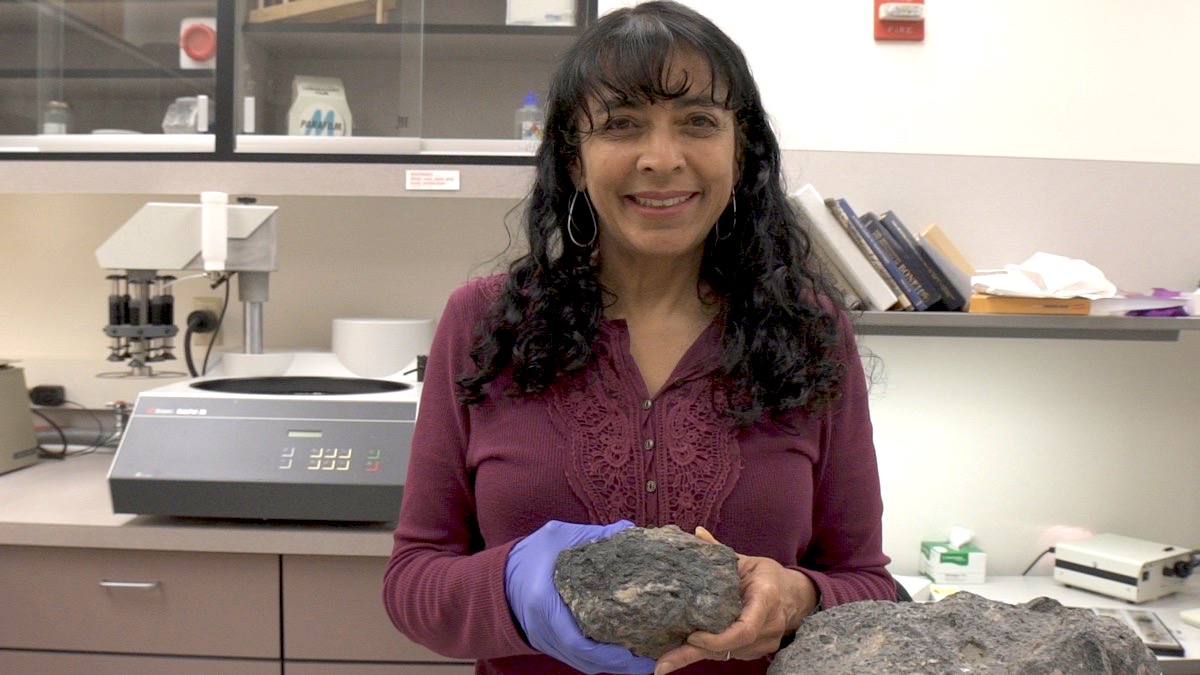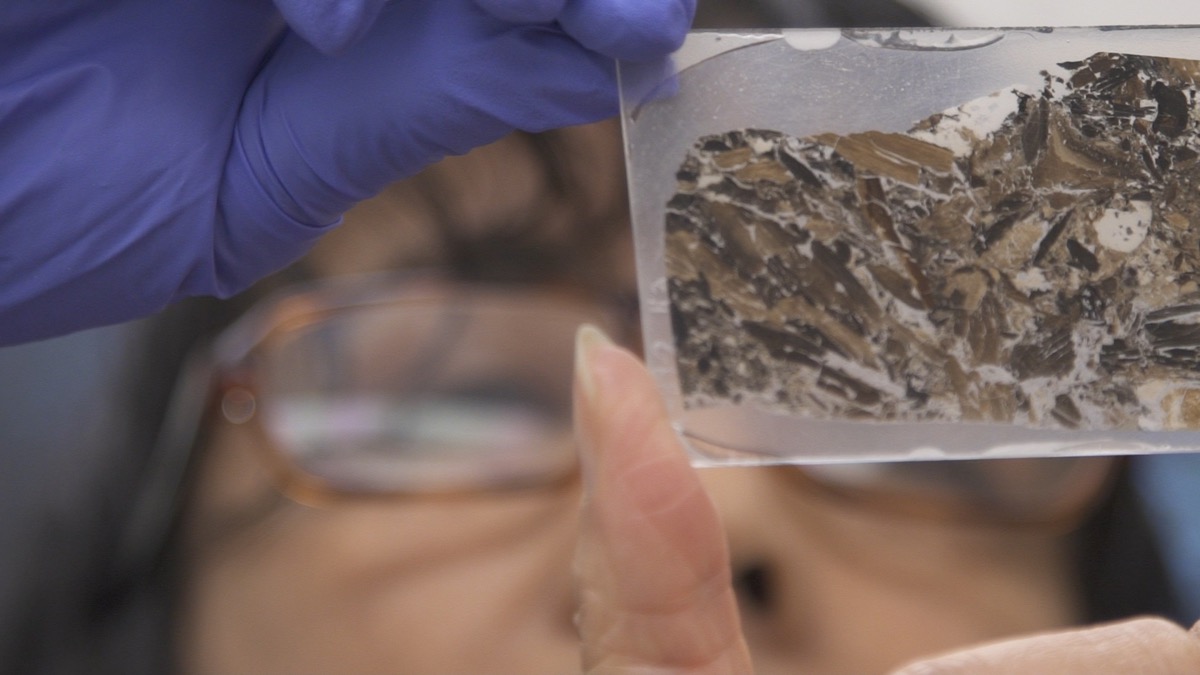
More often than not, paleontologist Karen Chin is thinking about poop—dinosaur poop, that is. Out on the prairie outside Choteau, Montana, she hunts for fossilized feces, or coprolites, and other dinosaur treasures. They may look like a regular rock or particularly beautiful stone to the untrained eye, but for Chin, a lump of dino dung is a window into Earth’s past environments.
“These little magic packages can provide really special perspectives on ancient life,” says Chin, an associate professor of geological sciences at the University of Colorado, Boulder.
This ancient poop is preserved in a variety of different colors and shapes, from mottled brown pancakes, to black bulbs, to gray sausage links. In her lab, she examines the surface of a specimen for traces of the dinosaur’s diet, conducts mineral and geochemical analyses, and slices thin slivers to look at the sample under a microscope for plant cells, tiny bones, or shells. These tests all help her determine the dinosaur “poopetrator.”

But to do her research, Chin has to overcome a dino poop “paradox.”
For every dinosaur that roamed the planet, it had to have defecated “gazillions of times,” she says. Yet, coprolites are much more difficult to come by than skeletal fossils of dinosaurs out in the field—mainly due to the specific conditions needed to create fossils.
Despite the rarity, Chin says that coprolites can provide clues about past creatures and environments that skeletons can’t. “Skeletal fossils don’t always tell you too much about the behavior of animals,” she says. “In addition to diet, [coprolites] can also tell you about what organisms might have been living along with the animal that defecated, and coprolites can also tell you about the conditions under which they were preserved.”
By studying her collection of coprolites, Chin is getting a vivid view of ancient ecosystems—from white rot fungi all the way to large herbivorous hadrosaurs that ingested them. She is coloring a more detailed picture of how creatures interacted with their environment, one piece of dinosaur poop at a time.
Want to analyze coprolites like Dr. Chin? Try out this fossil fecal forensics lab!
No one knows how the dinosaurs rose to dominate the planet, but the answers may lie within the mysterious End Triassic mass extinction that wiped out their competition. Meet more dinosaur detectives out in Utah and experience what it’s like in the field at Methods, From Science Friday.
Donate To Science Friday
Invest in quality science journalism by making a donation to Science Friday.
Credits
Produced by Luke Groskin
Article by Lauren J. Young
Music by Audio Network
Additional Footage and Stills Provided by Pond5, Karen Chin, James Super
Huge Thanks to the Two Medicine Dinosaur Center, Karen Chin, Frank Garrett Boudinot (Julio Sepulveda laboratory), the University of Colorado Museum of Natural History, the Museum of the Rockies, and the Denver Museum of Nature and Science.
Meet the Producers and Host
About Luke Groskin
@lgroskinLuke Groskin is Science Friday’s video producer. He’s on a mission to make you love spiders and other odd creatures.
About Lauren J. Young
@laurenjyoung617Lauren J. Young was Science Friday’s digital producer. When she’s not shelving books as a library assistant, she’s adding to her impressive Pez dispenser collection.